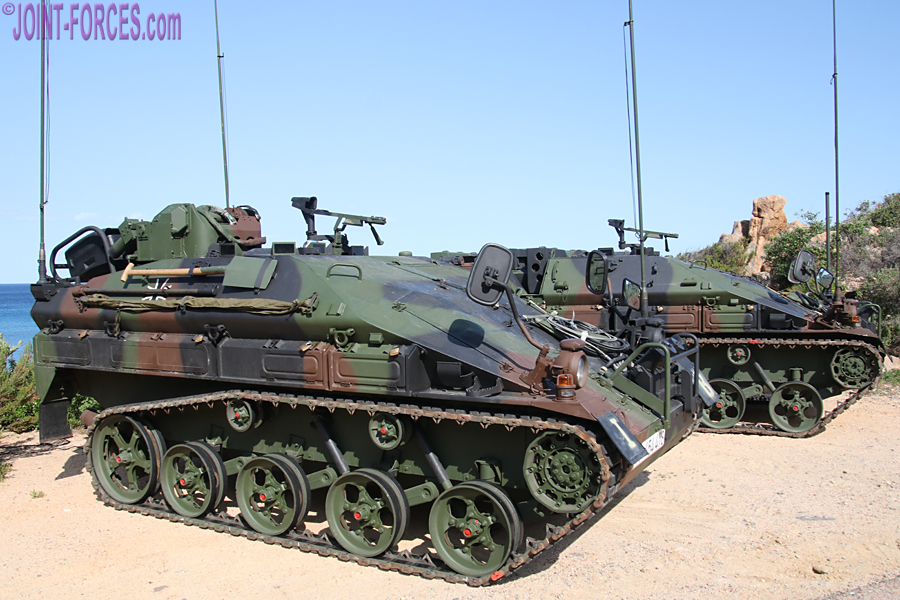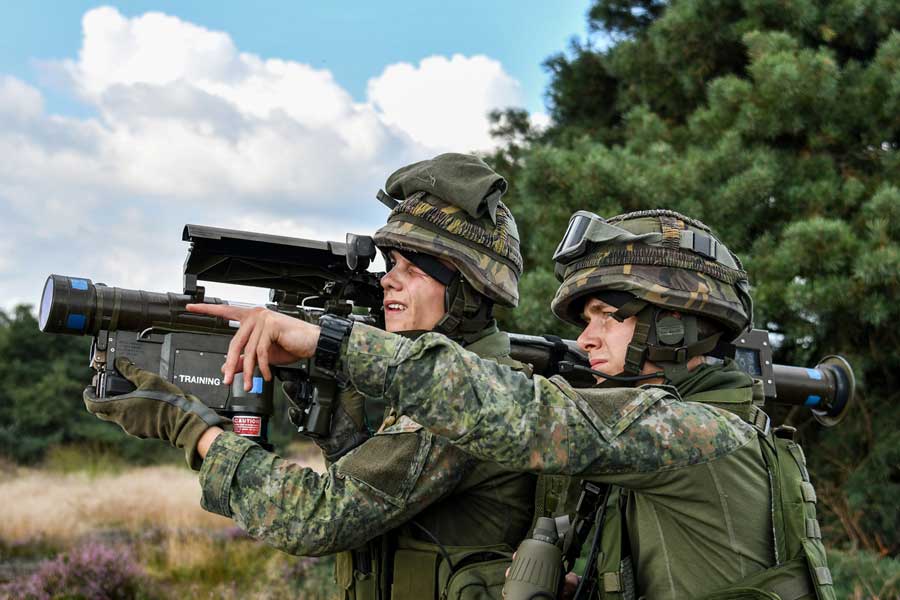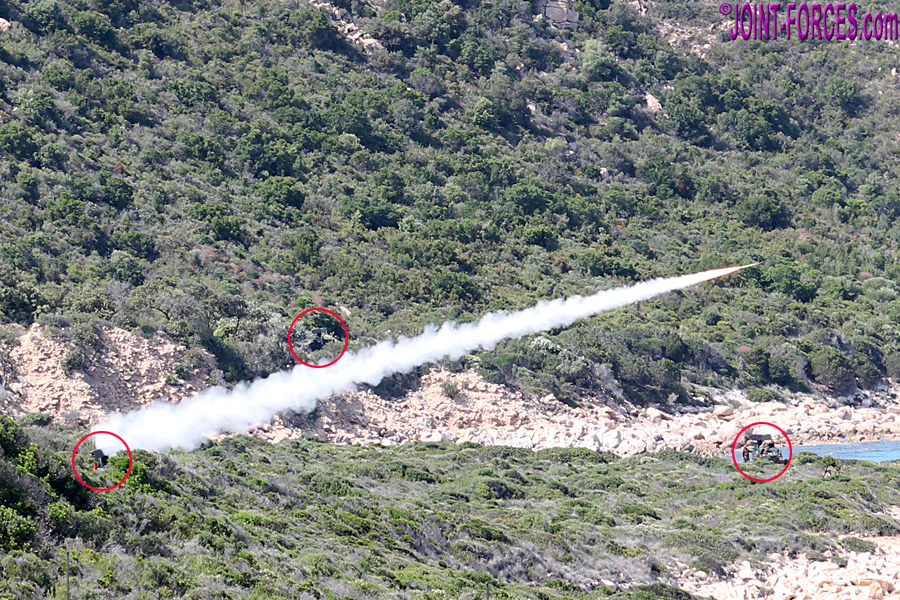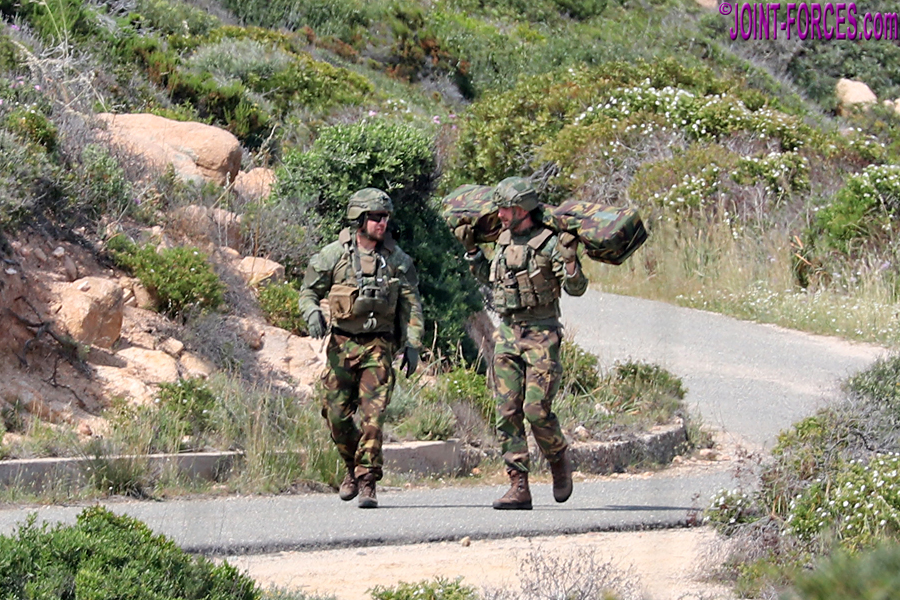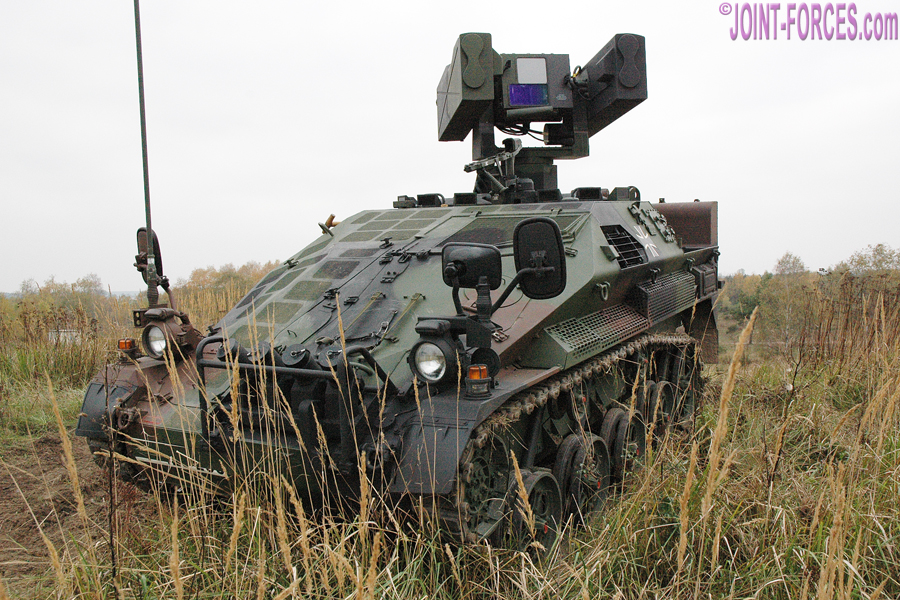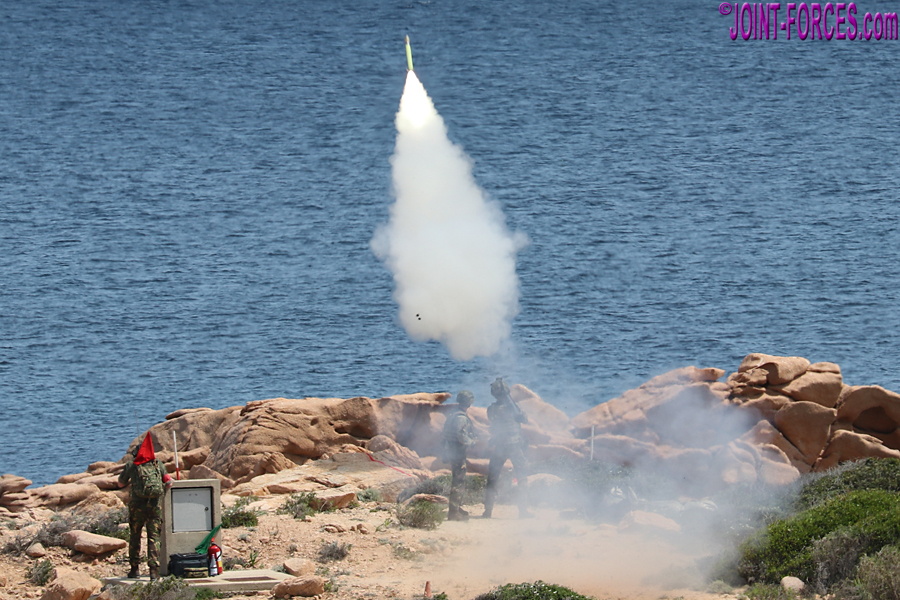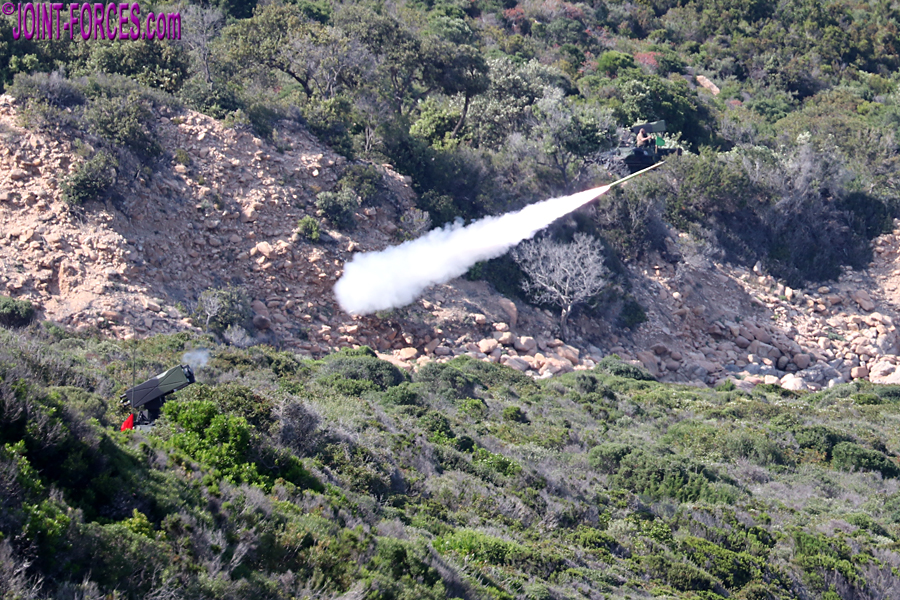
GBAD or Ground-Based Air Defence was the third dimension to the NATO deployment exercise NOBLE JUMP in Sardinia in mid-May 2023, reports Bob Morrison.
~
Exercise NOBLE JUMP 2023 or NOJU23, as we have previously seen, was a DEPLOYEX (Deployment Exercise) demonstrating the capability and integration of NATO’s Very High Readiness Brigade as a contribution to the Alliance’s deterrence and defence posture. The main focus was on speedily deploying a German-led multinational armoured and mechanised infantry formation drawn from seven distant nations to a training range in southern Sardinia and then conducting live-fire engagements with main battle tanks and artillery supporting wheeled and tracked infantry units as they first blocked an advancing enemy force and then counter-attacked to drive it back into the Mediterranean.
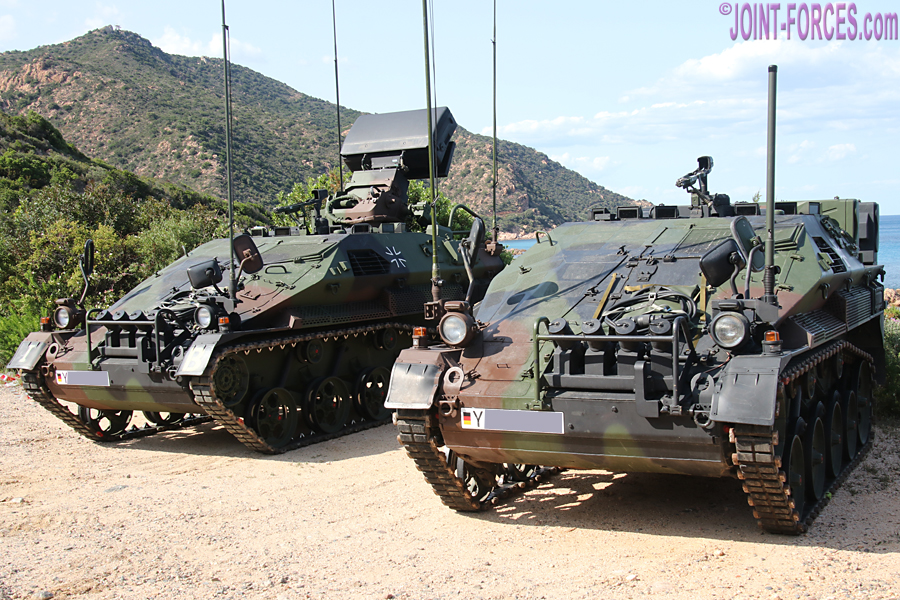
GBAD or Ground-Based Air Defence was the third dimension to the exercise, not least because the February 2022 Russian invasion of neighbouring Ukraine has emphasised that air defence against both ground attack aircraft and transport helicopters is crucial for blocking an advancing invading enemy force. However as NATO peacetime safety rules and templates for firing live missiles at air targets prevent their use on most ranges used for tank and infantry manoeuvres, the VJTF or Very High Readiness Task Force had to use the San Lorenzo ranges on Sardinia’s east coast instead of Teulada range in the south-west of the island. This was not the first time JOINT-FORCES had covered back-to-back infantry and air-defence phases of a NATO exercise on different ranges (see SABER GUARDIAN 2019 ~ Air Defence Artillery Live Fire) but when our NATO Press Officer contact suggested the long drive up to San Lorenzo during an admin day between the JAPDD rehearsal and the main event I jumped at the offer because these live-fires are so tightly controlled on safety grounds that they are almost as rare as hens’ teeth.
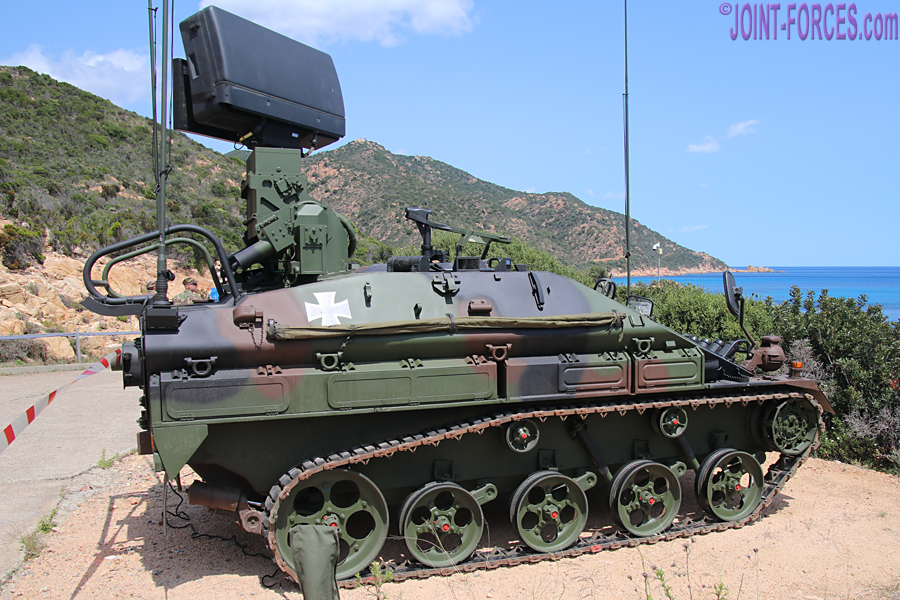
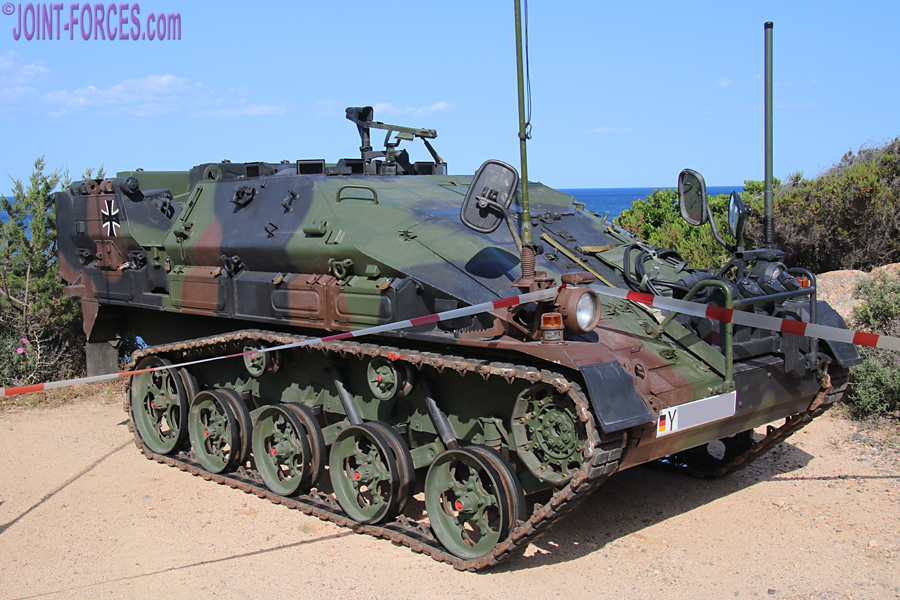
The VJTF23 short range air defence (SHORAD) component on Sardinia was a Dutch and German formation drawn from the Dutch-led Joint Ground-based Air Defence Command (Defensie Grondgebonden Luchtverdedigingscommando or DGLC) which consists of Royal Netherlands Army, Royal Netherlands Air Force and German Air Force units. At San Lorenzo the new Dutch 11 Air Defence Battery (11 Luchtverdedigingsbatterij) deployed with shoulder-launched FIM-92 Stingers alongside a battery from the 3rd Squadron of the German Air Defence Missile Group 61 (3./ Flugabwehrraketengruppe 61) operating the Ozelot LeFlaSys (Leichtes Flugabwehrsystem) air defence version of the Wiesel 2, which also uses the Stinger. Dutch Forces additionally use Stinger on the LGS Fennek 4×4, but none of these took part in the live-fire on the day I visited the coastal range.
The NOJU23 DEPLOYEX took place just before 11 Luchtverdedigingsbatterij was formally stood up on 1st June 2013. In an auto-translated press release of the same date the Dutch MoD stated: “ The unit’s speciality is protection against airborne threats at close and very close range. The battery consists of a Stinger platoon and a counter drone platoon. The new unit falls under the Defence Ground-based Air Defence Command (DGLC), which has its home base in Vredepeel. The arrival of the new unit is the start of a series of changes to further strengthen the Dutch air defence.”
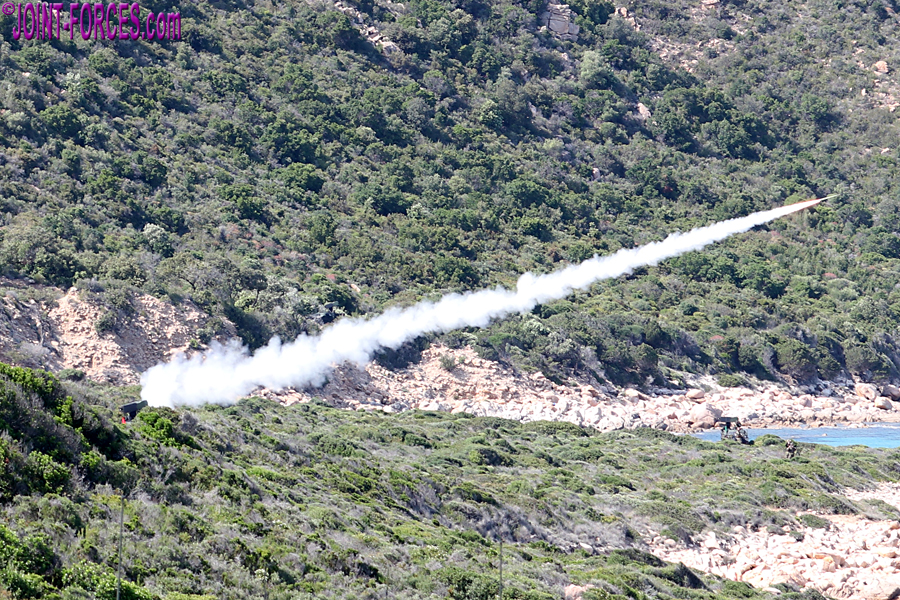
The, understandable, range safety constraints were so strict that the closest I was allowed to be was several hundred metres from the live German Ozelots and a couple of hundred metres from the closest Dutch MANPADS (Man-Portable Air Defence System) Stinger firing point; however as no other media were present on the range we were able to obtain exclusive coverage despite the restrictions. All movement on the range, except for troops engaged in firing missiles and their safety officers, was locked down for several hours but fortunately my hosts found me a great vantage point from where I could just see all firing positions. The Banshee air targets being engaged were launched from elsewhere on the range, out of sight of the participating missile firers, and I was unable to get close to the Ozelot AD Weapons Carriers on the firing points. However the Wiesel 2 Reconnaissance and Fire Control Vehicle, AFF in German, escorted by a spare Weapons Carrier, was operating from a static location just a short distance from my camera position and I was able to grab a few reference snaps just before and after range lockdown.
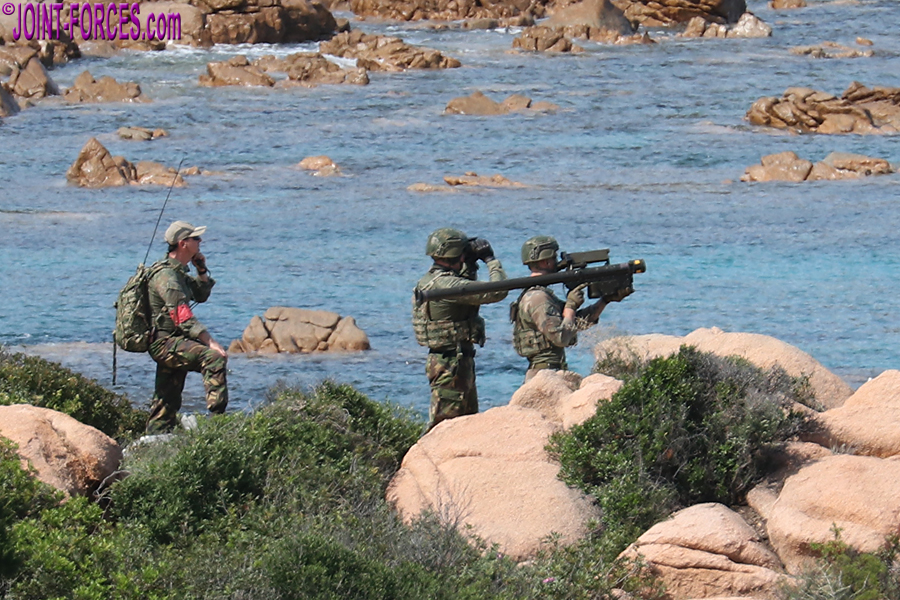
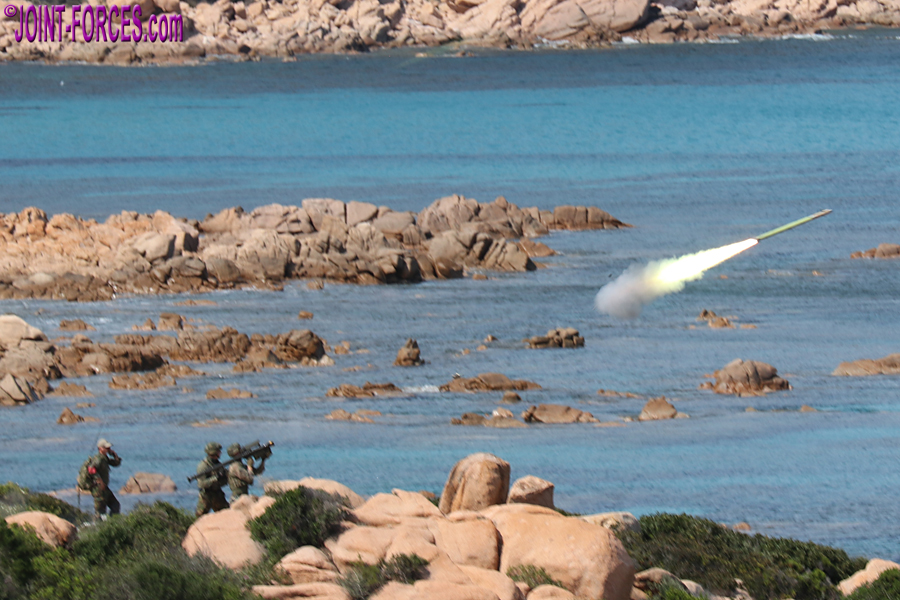
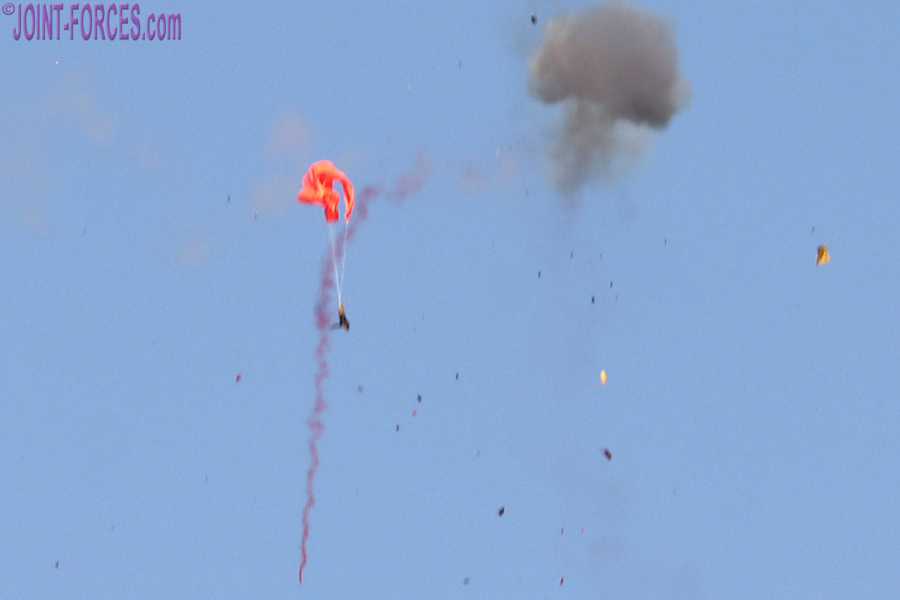
¤ Dutch Stinger in flight at San Lorenzo [©BM]
¤ Destroyed target drone drops to earth under an opening parachute [©BM]
As we have previously covered a Stinger live-fire (see:- US Army SHORAD ~ FIM 92 STINGER MANPADS) but we have not focussed much on the Ozelot LeFlaSys, I have delved back into my archives to find a few supplementary shots to further illustrate this article. The beauty of this roughly five tonne GVW system is that it is both light and compact enough to fit inside a German CH-53G or Dutch CH-47 transport helicopter meaning it can be very speedily deployed over long distances but it is small enough to hide from sight in both rural and urban environments until required.
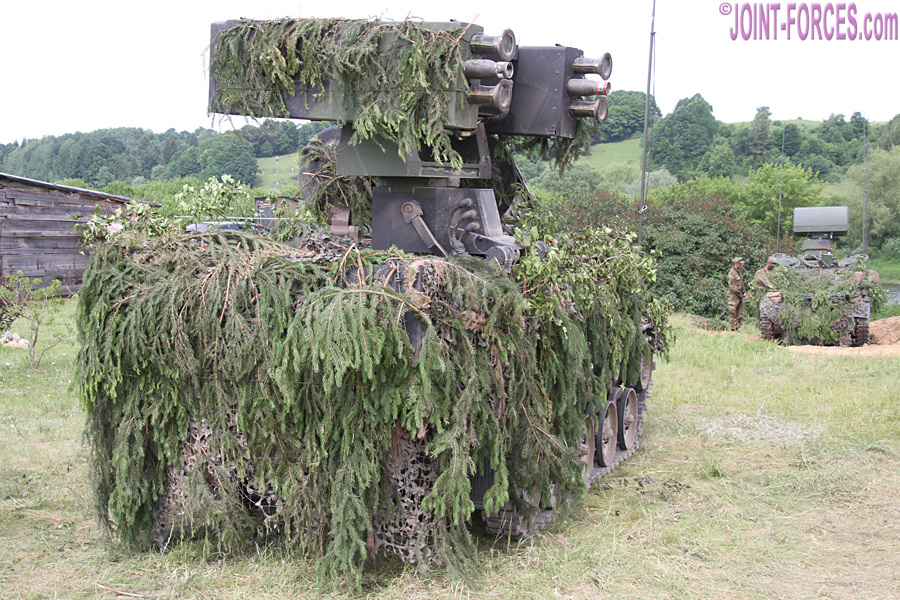
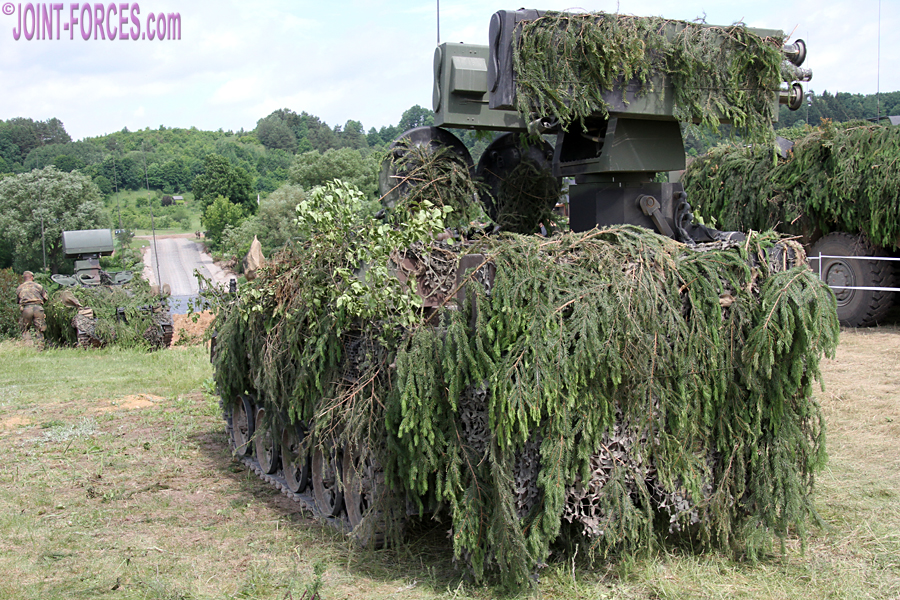
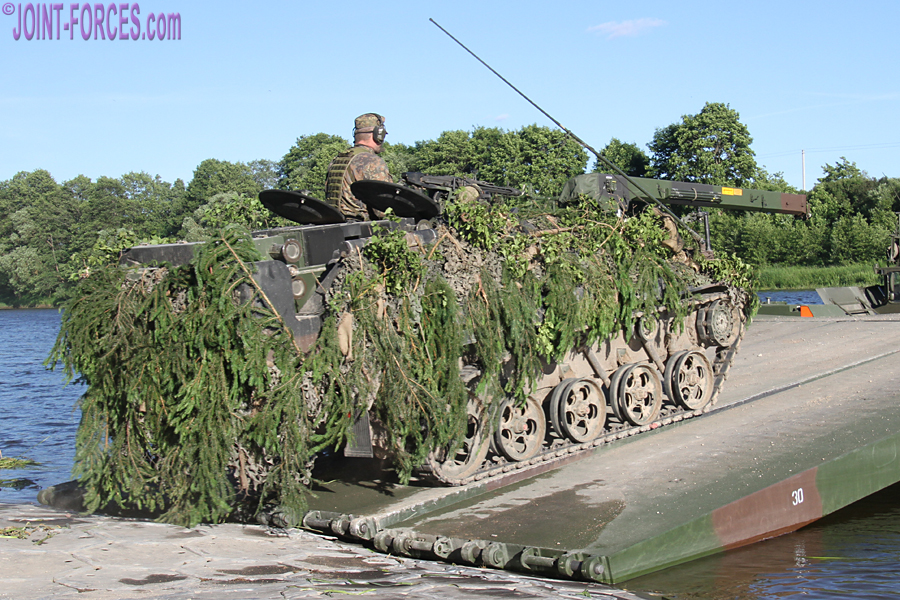
Range safety is a pain but is necessary when live missiles are being fired as, unlike an artillery shell which travels in a straight line once it has left the barrel, a rogue missile can fly almost anywhere when something goes wrong. Fortunately on the day we were there the only ‘blind’ involved a missile’s second stage propulsion not cutting in, resulting in it dropping into the sea just offshore. As for the effectiveness of the missiles launched, the Dutch had a slightly higher hit rate than the Germans; mind you, if I had been tasked to carry that heavy load on my back I reckon I would have done everything in my power to ensure that not only did I engage the target to reduce the load but hit it too as payback.
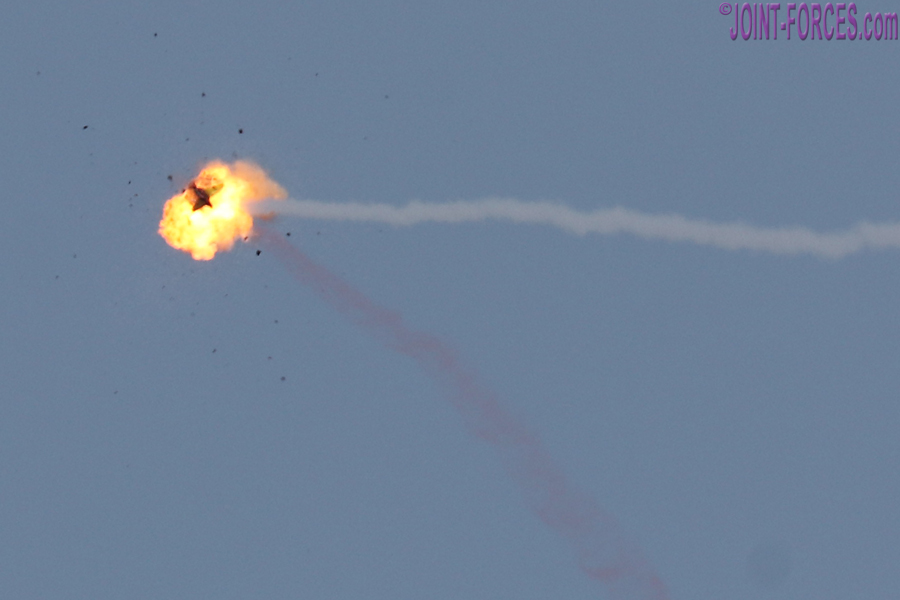
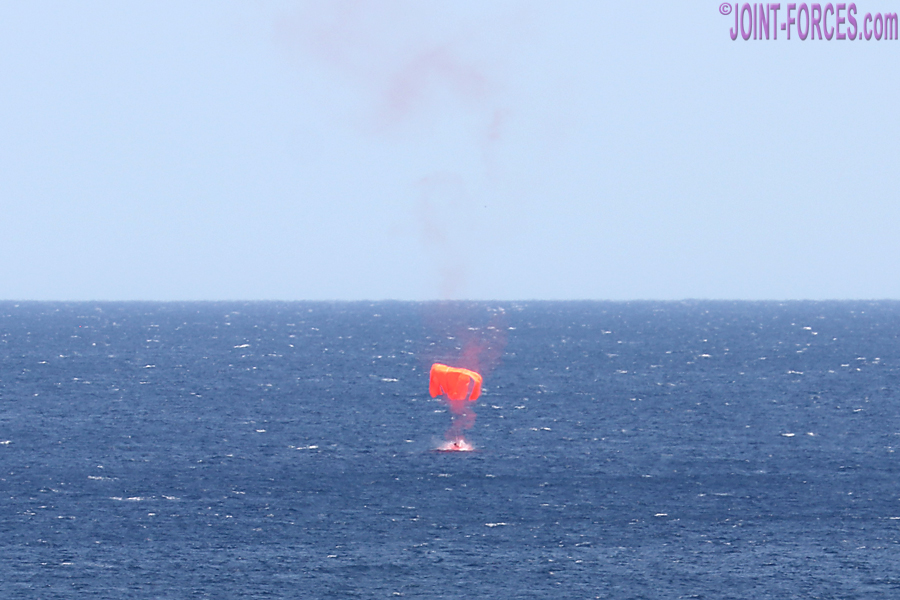
¤ A second Dutch Stinger MANPADS firing position engaging an approaching target [©BM]
¤ Approaching target destroyed by Stinger [©BM]
¤ Splash-down ~ destroyed and damaged targets are recovered afterwards to reduce any remaining fuel and lubricants etc. pollutiing the sea [©BM]
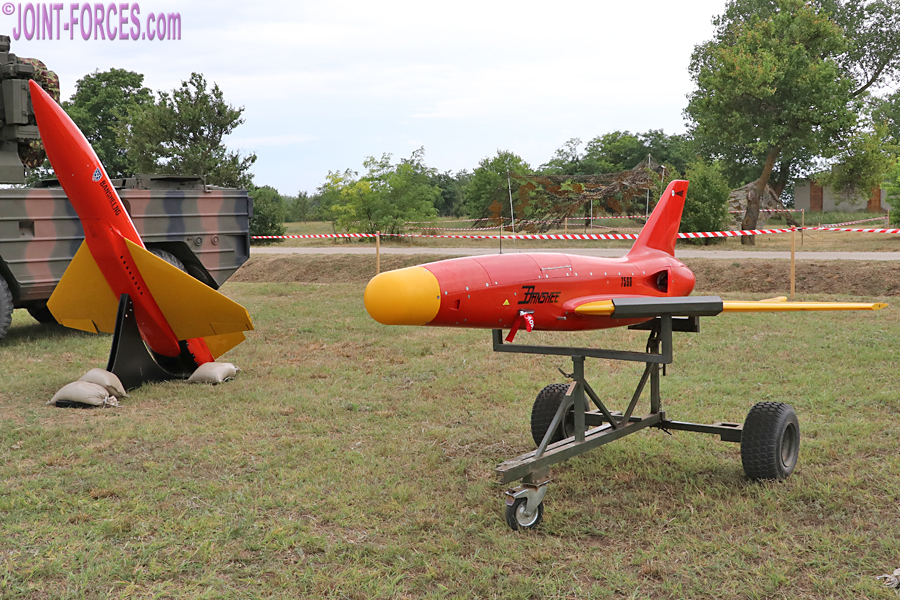
[images © Bob Morrison unless otherwise noted]
~
See also:-


